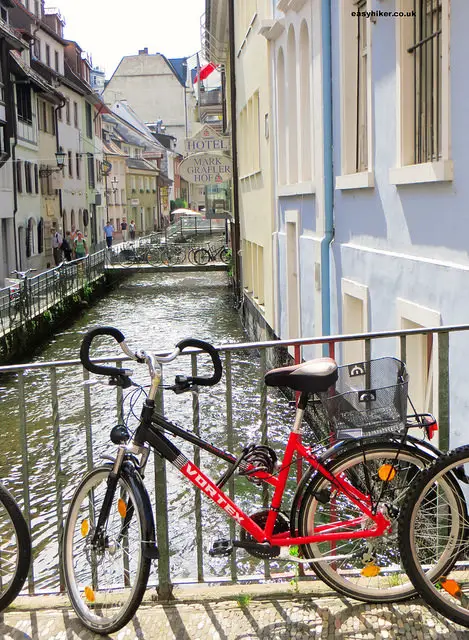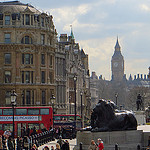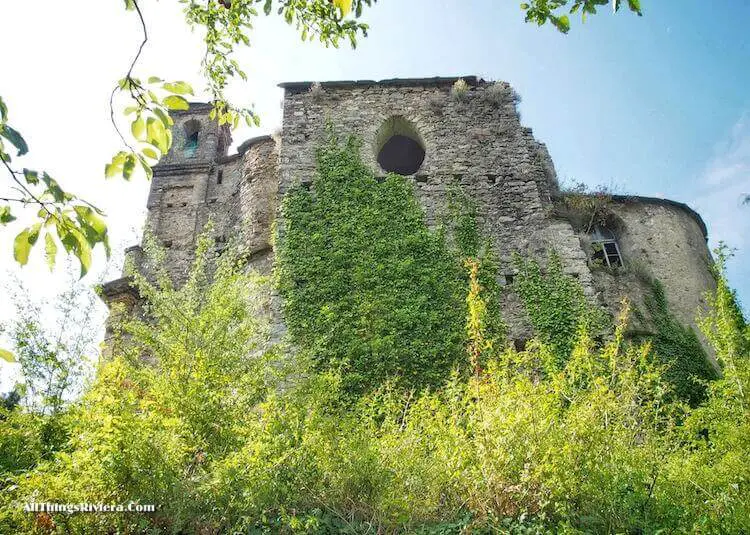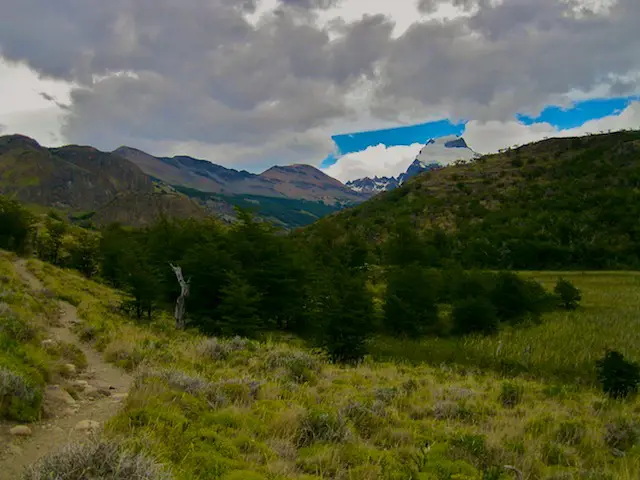Most cities in the world were founded near a body of water, and for most old cities, this body of water was a river that provided fresh water, a transport connection to the wider world and a handy sewage disposal system.
Edinburgh ticks the latter of these boxes, but having said that, it is equally true that nobody would confuse its Water of Leith with the Thames or the Seine.

For one, because the Water of Leith is short (little more than 30 km separate source and estuary), for another, because it does not run through but only bypasses Edinburgh’s town centre.
For visitors who do not deliberately seek out the stream, it is largely invisible: you can easily spend a whole week in the city without ever seeing the Water of Leith or even learning about its existence.
Above all, however, compared with the mighty rivers of London and Paris, the Water of Leith is of modest dimensions, which is why in Scottish parlance it is called a “water”, apparently a term for something in between a creek and a proper river. (The Scots label water in all of its forms – mist and rain as well as what becomes of all this precipitation once it collects on the ground – as diligently as the Eskimos distinguish between different kinds of snow.) Because of these shortcomings, the Water of Leith was of little use for the inhabitants of medieval Edinburgh.
Nowadays, locals are mainly familiar with it because of the walkway that has been laid out on its banks all the way from Balerno to Leith where the stream flows into the Firth of Forth, the “fjord” of Edinburgh. (Nearly all major Scottish town have been built near such a firth-fjord – the two words share a common origin. The one exception is Aberdeen which looks out to the open sea.)
The walkway does not cover the first 10 km of the stream’s length, but at over 20 km, it is still a trifle long for a single day. You can either divide it up or concentrate on the most scenic stretch – which, incidentally, is also the stretch where the walkway most closely approaches the town centre.
Get Walking Edinburgh Along The Water Of Leith
This is what we did, joining the walkway at the Village of Dean.

This village, founded by in the 12th century, was built to derive maximum benefit from the stream’s single greatest asset: its strong currents and its ability to generate enough energy to power mills.
For almost 1000 years, it was here where the grain was milled to feed the near-by city of Edinburgh.
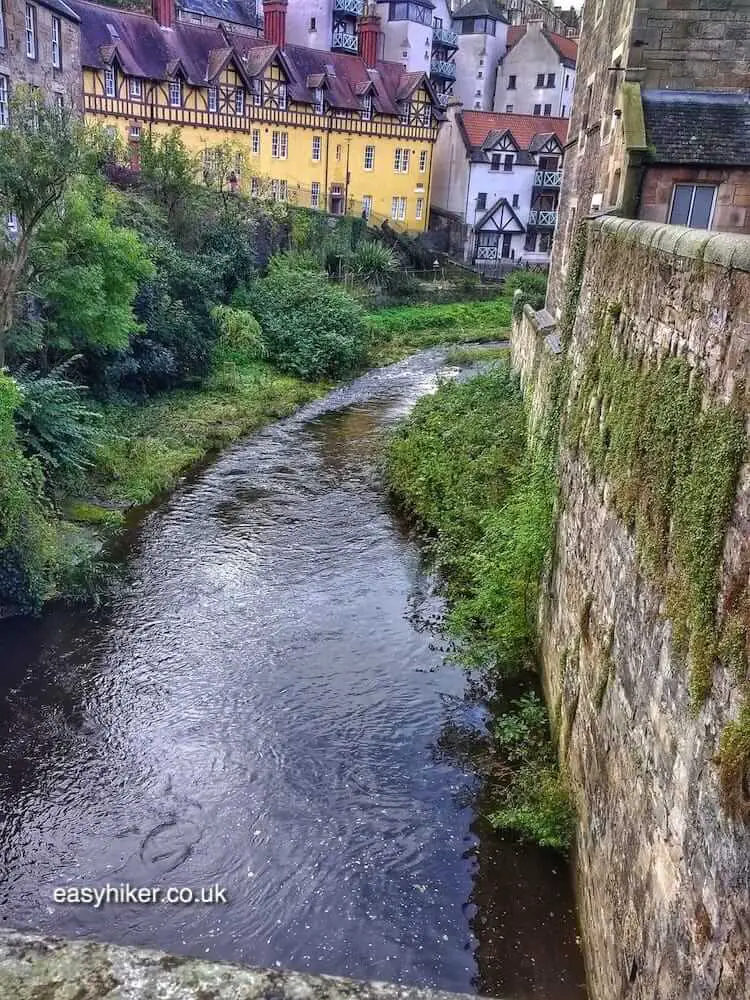
The village experienced another boom in the early stages of the industrial revolution, and the mix of architecture from the Victorian age and earlier periods gives the streets their unique character.
When walking Edinburgh along the water of Leith, stroll around a little before going any further – and do not miss to take a look at Well Court, an Arts & Crafts apartment block from the late 19th century which is also the village’s most famous building.
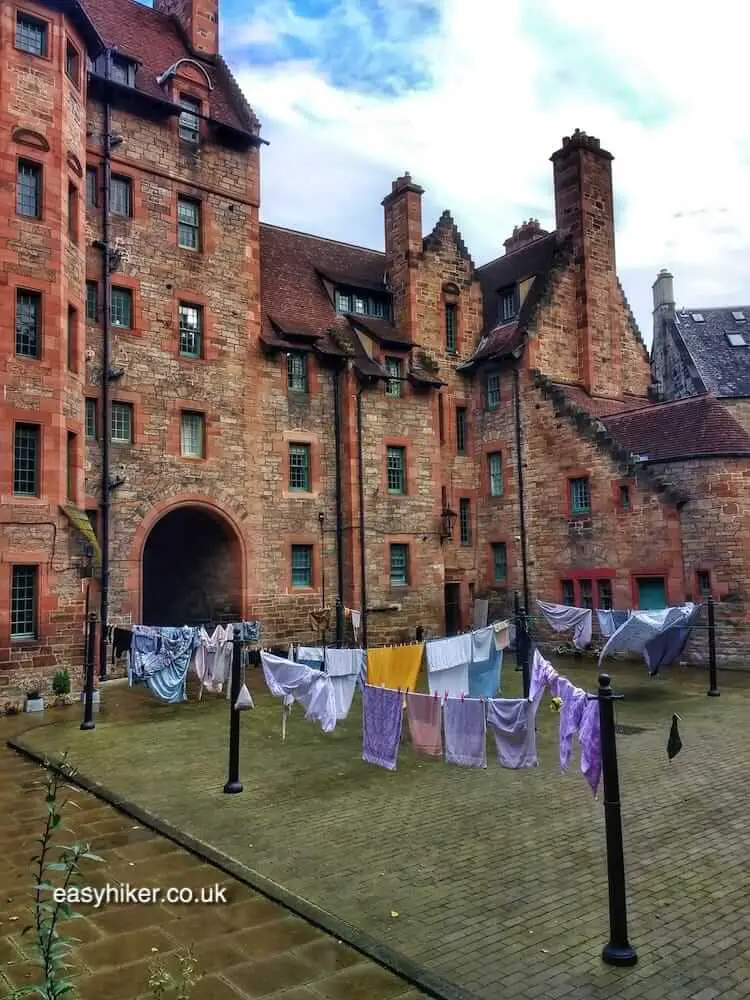
Today’s stream has been tamed by many weirs, and its character varies greatly. Inside Dean village, the Water of Leith shows both of its faces, the lively and the sedate one, but behind Dean Bridge, …
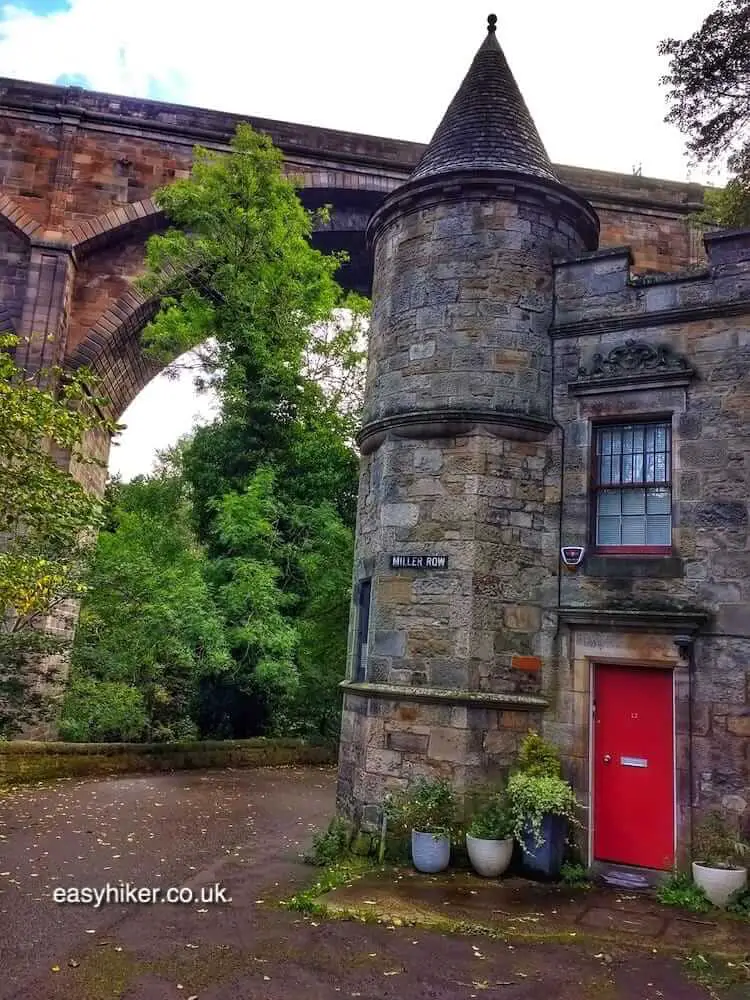
… the stream gathers pace and turns into a forceful torrent. This is not only the stream’s fastest section, …

… but also its most carefully landscaped. Along the way, you can spot classical 18th century garden ornaments …
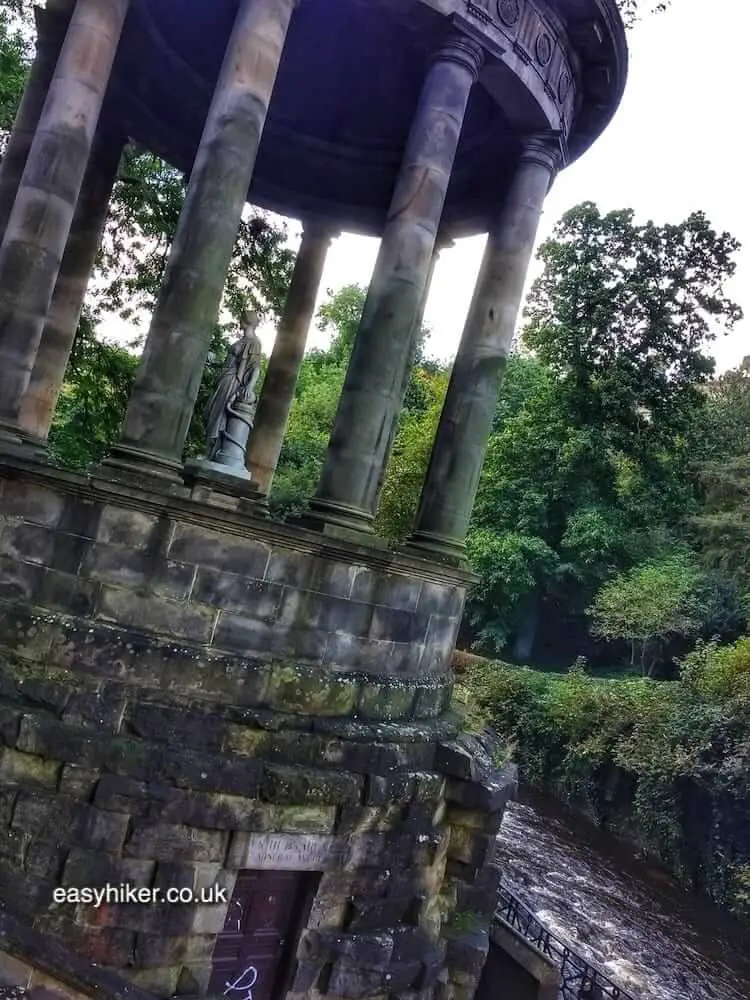
… that mix with witnesses of late Victorian landscaping tastes …
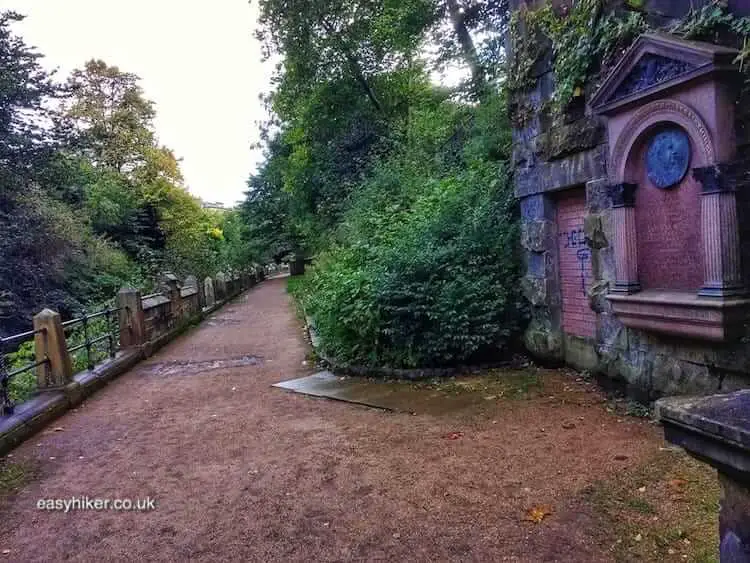
… as well as with more recent additions.

All of this makes for fantastic entertainment. If the walkway continued like that all the way through, it could make a credible claim for being the Greatest Urban Hiking Trail anywhere in the world.
Inevitably, however, it falls victim to the law of unsustainable “immoderate greatness”, like ancient Rome in the famous words of Edward Gibbon. The best of the trail already lies behind you when it starts to break up here and there and you have to leave the river footpath, sometimes just to cross a road and to continue on the other side, …
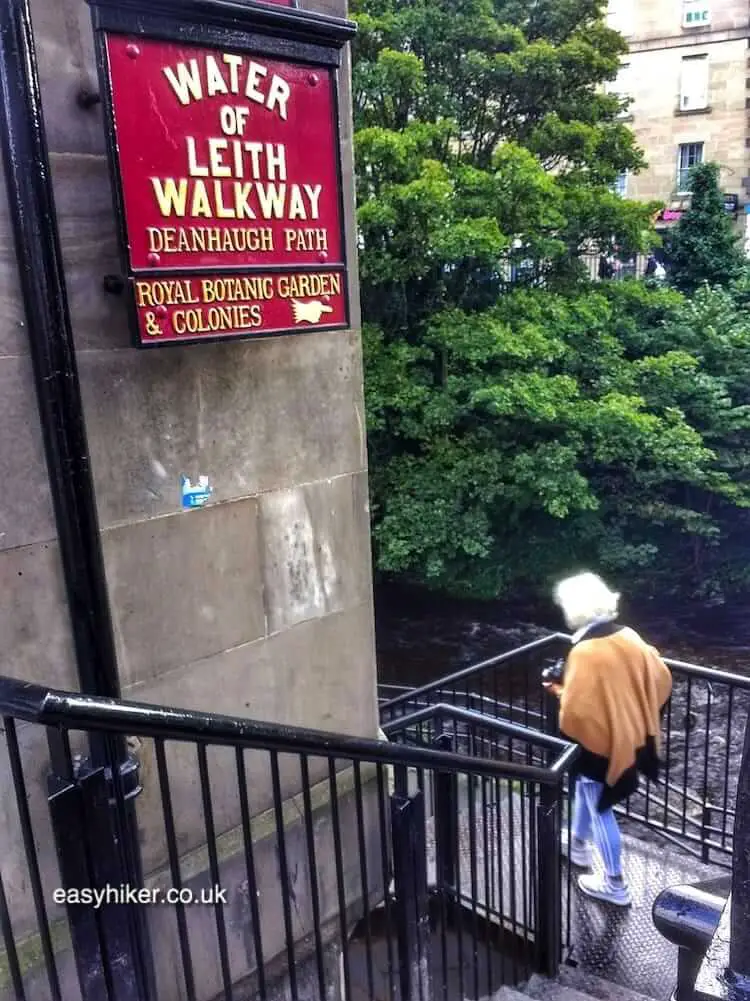
… sometimes to walk for a few hundred metres through city streets.
This may be a bit annoying at first, but you will soon begin to appreciate these longer breaks as they provide you with an opportunity of sampling the atmosphere in the city’s different neighbourhoods. (Stockbridge in particular is worth a look.)
As the stream passes from inner-city quarters to the more distant suburbs, the trail itself becomes a largely pleasant stroll, …
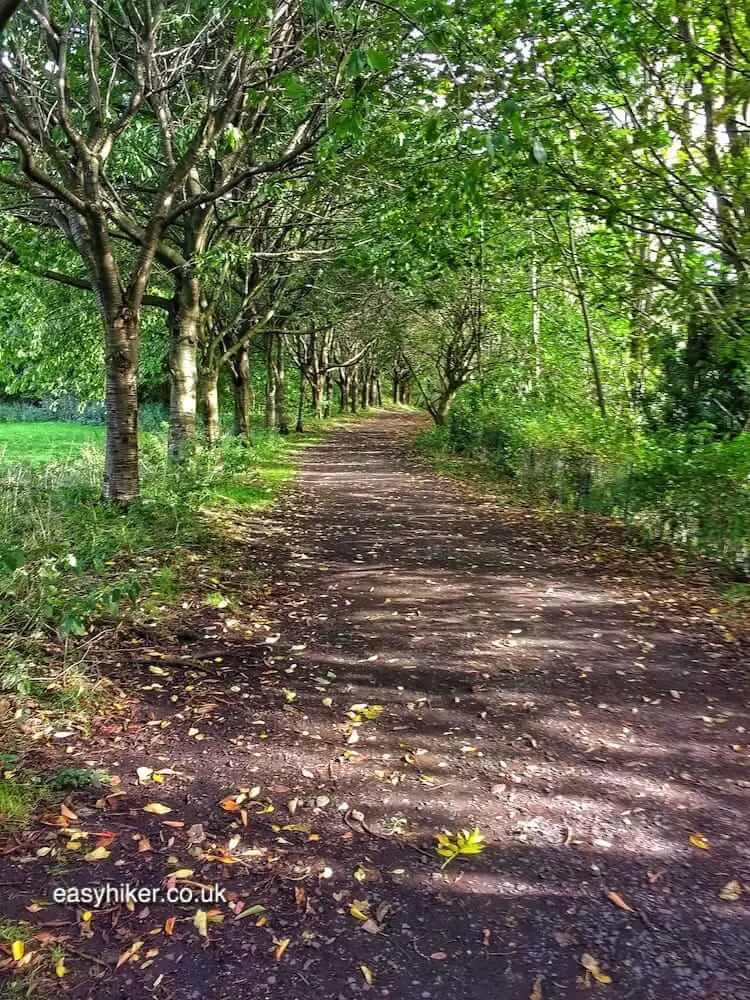
… which is accentuated by the occasional picturesque view.
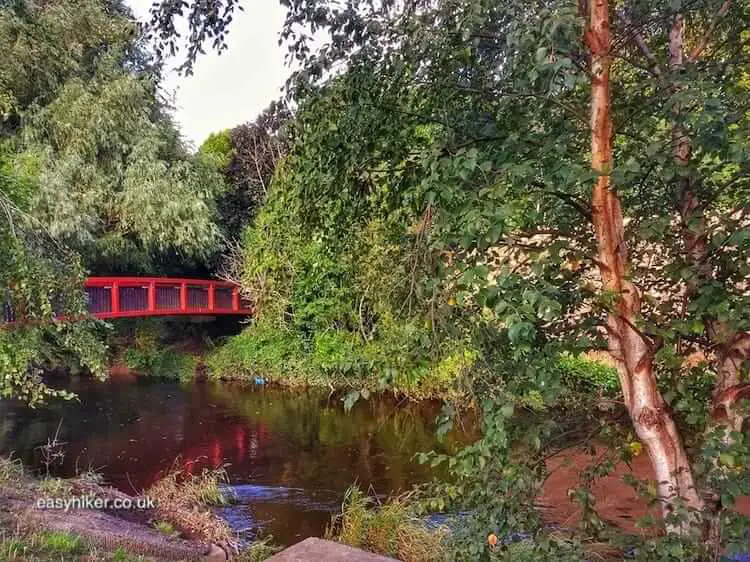
Overall, the walkway resembles nothing so much as a soccer game that is tied at 2-all after a breathless first 15 minutes, following which the two teams, exhausted by the early drama, play out a cagey draw. The excitement subsides behind Stockbridge and only rises again in the last few minutes when the stream literally opens up for the Leith estuary.
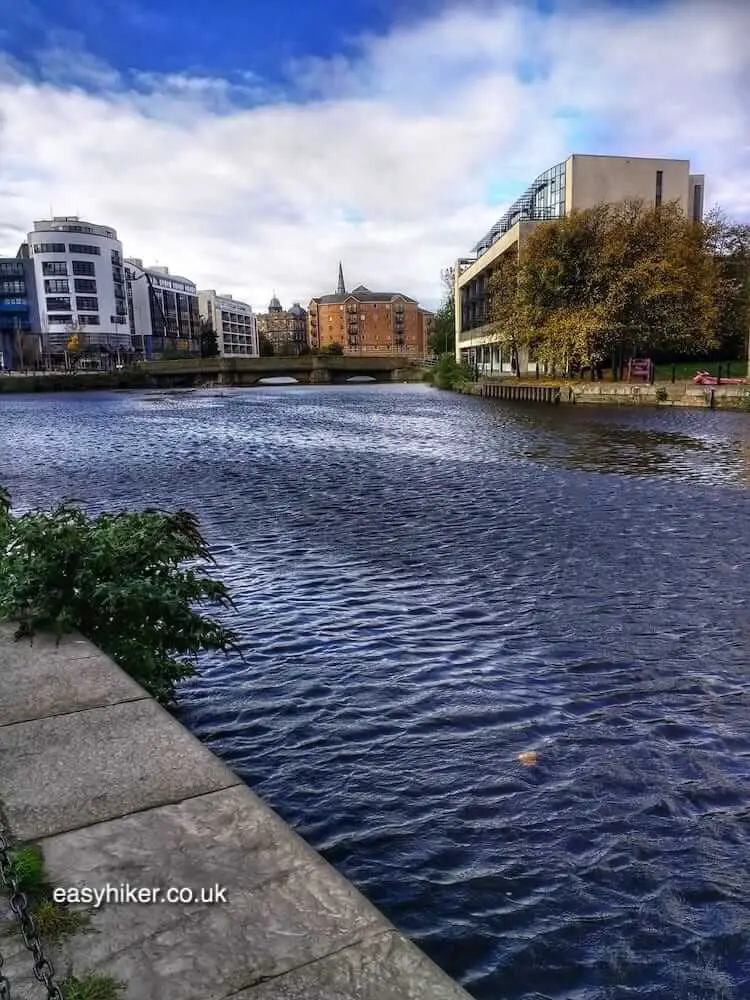
This is when you are entering the harbour of Leith, technically a part of Edinburgh (since the 1920s when the days of Leigh as an independent city came to an end) but not so much in the hearts and minds of people on either side of this still existing divide.
The marina is the most attractive and genteel bit of Leith, …
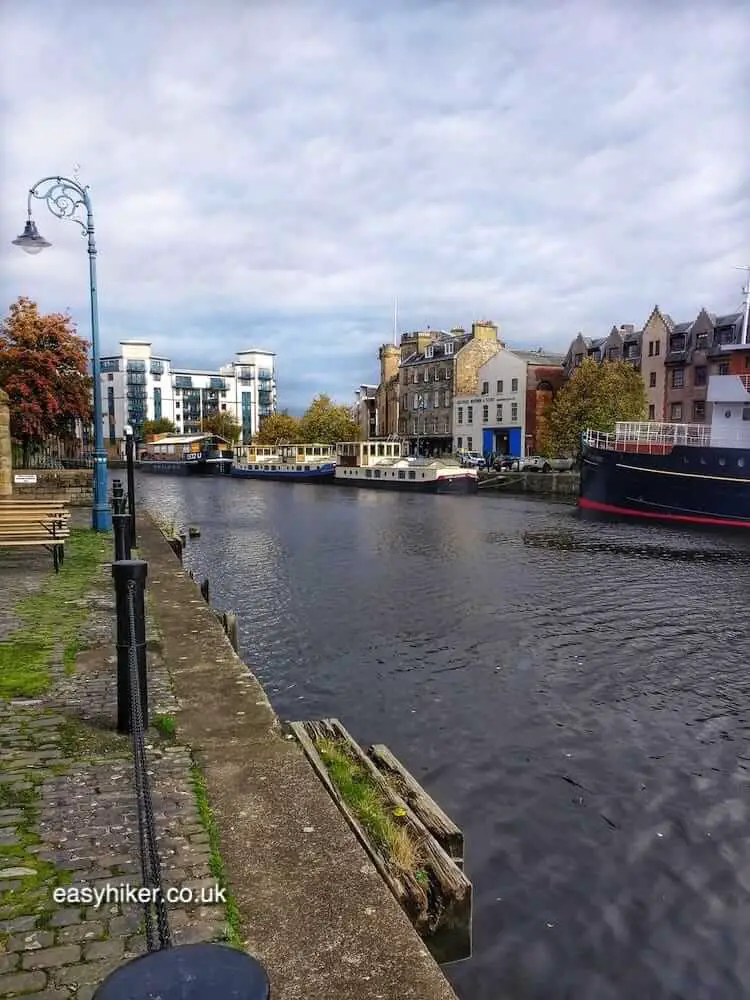
… while the industrial harbour to the north and the town centre to the south have a much rougher feel.
If you can spare the time, you can take a look at either: the harbour is just a short walk away, while the town centre – along a street called Leith Walk – can also be inspected from the trains on the tramway line that connects Leigh with Edinburgh.
We would recommend a hike down Leith Walk only for people with an appetite for that particularly Scottish version of mournful melancholy.
The Walk of Leith, by contrast, offers something for all tastes. It is both pastoral and sublime, savage and civilized, temperamental and mellow, urban and bucolic. Just one note of warning: we suspect that not all of its current ornamental features will last much beyond late October.



